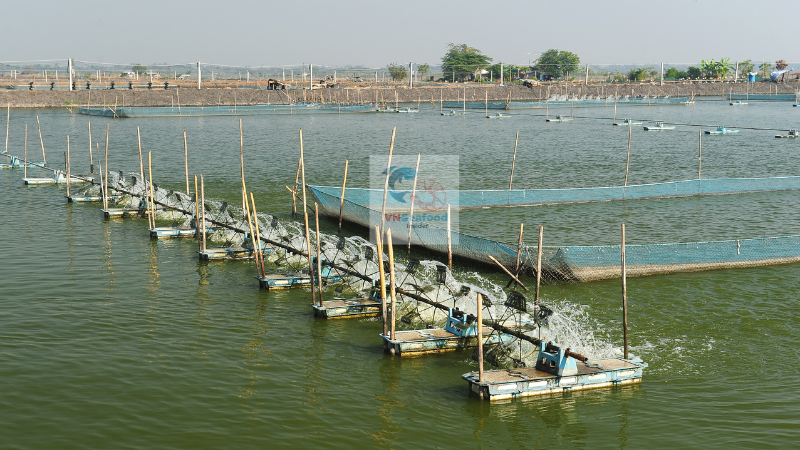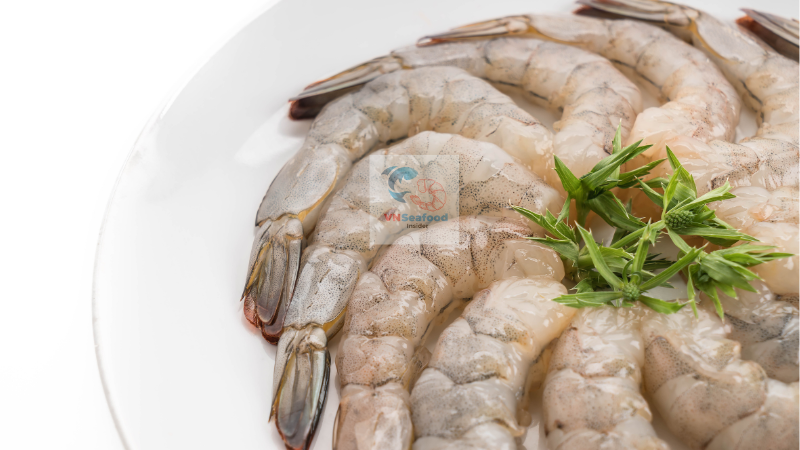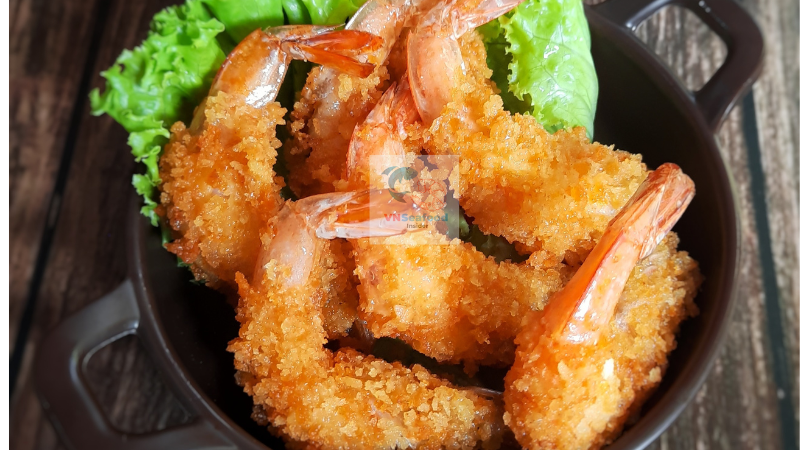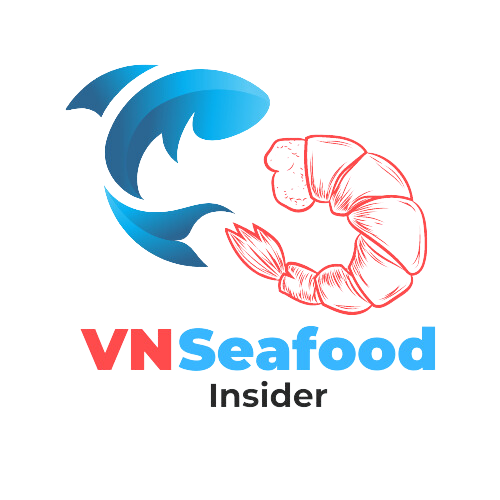As the dust settles on President Trump’s reciprocal tariff announcement, one thing has become crystal clear: among Vietnam’s seafood exports, shrimp stands to lose the most. At VNSeafoodInsider, we’ve analyzed the numbers and spoken with industry experts to bring you a comprehensive look at why Vietnamese shrimp exports are particularly vulnerable to these new trade measures, and what it means for the industry going forward.
The April 9th implementation of the U.S. reciprocal tariff policy has sent shockwaves through Vietnam’s seafood sector, with shrimp producers and exporters scrambling to adapt to a drastically altered competitive landscape. Let’s dive into why Vietnam shrimp specifically faces the heaviest impact and what challenges lie ahead.

Outline
ToggleThe Severity of U.S. Tariffs on Vietnamese Seafood
When President Trump announced a planned 46% tariff on Vietnamese goods, many hoped for a more moderate outcome. Instead, while the full implementation has been delayed by 90 days with a temporary 10% flat rate, the looming threat of the full 46% tariff remains on the horizon unless successful negotiations take place.
For Vietnam’s seafood industry, these tariffs couldn’t come at a worse time. The U.S. currently represents about 15.1% of Vietnam’s seafood export market, making it one of the largest destinations for Vietnamese aquatic products. Within this category, shrimp has historically been the crown jewel of Vietnam’s seafood exports to America.
Trần Đình Luân, Director of Vietnam Directorate of Fisheries at the Ministry of Agriculture and Environment, didn’t mince words when assessing the situation: “When the U.S. applies a 46% tariff on Vietnamese goods, the biggest concern for the seafood industry is shrimp – the flagship product with the highest export value to the U.S. – followed by tuna, pangasius, and marine fish.”
See more post: US Reciprocal Tariffs impact Vietnam Seafood.
Why Shrimp Bears the Brunt of the Tariff Impact
There are several key factors that make Vietnamese shrimp particularly vulnerable to these new tariffs:
Dominant Market Position
The United States has consistently been Vietnam’s largest and most traditional shrimp export market, accounting for approximately 20% of Vietnam’s total shrimp export revenue. In 2024, Vietnam exported $755.59 million worth of shrimp to the U.S., representing 19.5% of its total shrimp exports of $3.87 billion.
This level of market concentration means that any disruption in the U.S. market has an outsized effect on the entire Vietnamese shrimp industry. Currently, about 230 Vietnamese companies export shrimp to the U.S., all of whom now face an existential threat to their American business.

Triple Taxation Threat
Beyond the new reciprocal tariff, Vietnamese shrimp is also subject to two ongoing legal cases in the U.S.: anti-dumping (AD) and countervailing duty (CVD) investigations. This creates a potentially devastating triple taxation scenario.
As Le Hang, Deputy Secretary General of the Vietnam Association of Seafood Exporters and Producers (VASEP), explained: “Vietnamese seafood doesn’t just face the 46% reciprocal tariff as there are additional tariffs, including countervailing and anti-dumping duties, which can bring the total tax up to 75%.”
To put this in perspective, VASEP calculated that a single shrimp shipment worth $5 million could incur an additional $2 million in tariff costs. For many small and medium-sized exporters operating with thin margins, this makes the U.S. market essentially unviable.
Immediate Market Reaction
The market response to the tariff announcement was swift and severe. In Cà Mau province, a major shrimp farming region, prices for vannamei shrimp (whiteleg shrimp) dropped by 4,000-15,000 VND per kilogram almost immediately after the April 3rd announcement.
Many exporters have already paused contract signings and halted shipments, even at the risk of penalties for breaching existing agreements. The uncertainty surrounding whether shipments already en route would be subject to the new tariffs has only compounded the problem.
Competitive Disadvantage in the Global Shrimp Market
The tariff situation has dramatically altered the competitive landscape for Vietnamese shrimp in the global market, particularly in relation to other major suppliers to the U.S.
Favorable Treatment for Ecuador and Latin American Producers
While Vietnam faces a potential 46% tariff, Ecuador—one of Vietnam’s main competitors in the U.S. shrimp market—is subject to only a 10% tariff. This 36-percentage-point difference creates an almost insurmountable competitive disadvantage for Vietnamese products.
Other Latin American producers, including Argentina, Honduras, Mexico, Guatemala, Peru, and Saudi Arabia, are also positioned to benefit from lower tariff rates compared to Asian exporters. These countries are expected to expand their production capacity for peeled and value-added shrimp products that are in high demand in the U.S. market.

See more: Top 5 shrimp processing companies in Vietnam
Reshuffling Among Asian Exporters
Even among Asian exporters, Vietnam is at a disadvantage. India faces a 26% tariff, Indonesia 32%, and Thailand 36%—all lower than Vietnam’s 46%. This means that even within the Asian supplier ecosystem, Vietnam will likely lose market share to competitors like India, which is still positioned to supply product categories that Latin American producers cannot yet fully cover.
Immediate Industry Response and Adaptation Strategies
The Vietnamese shrimp industry isn’t standing still in the face of these challenges. Both government agencies and private enterprises are taking urgent steps to mitigate the impact.
Government Initiatives
The Vietnamese government is mobilizing several responses:
- The Ministry of Finance is implementing stricter supervision of tax refunds for enterprises engaged in simple processing and re-export
- Authorities are guiding coastal provinces to closely monitor production areas and prevent panic harvesting
- Trade officials are actively negotiating with U.S. counterparts during the 90-day grace period to seek more favorable terms
Industry Adaptation
Vietnamese shrimp exporters are pursuing several strategies to weather the storm:
- Market diversification: Shifting focus to other major markets like China, South Korea, EU, and Japan
- Supply chain optimization: Applying advanced technologies to increase productivity and reduce production costs
- Brand building: Strengthening product traceability and origin verification to avoid being caught in origin fraud investigations
- Shipment timing: Carefully planning export schedules to avoid the highest tariff periods

As Kim Thu, a shrimp market expert at VASEP, advised: “Enterprises should carefully consider the timing and planning of shipments to avoid unwanted tariff levels. They should wait for government guidance before deciding on further export plans.”
Long-Term Implications for Vietnam’s Shrimp Industry
While the immediate impact is severe, the longer-term implications could reshape Vietnam’s entire shrimp sector.
Potential Market Restructuring
If the 46% tariff becomes permanent, we’re likely to see a significant restructuring of Vietnam’s shrimp industry. Many smaller producers may exit the market entirely, while larger players with stronger financial resources might pivot to other markets or product categories.
The industry may also accelerate its efforts to move up the value chain, focusing less on simple processing and more on higher-value products that can absorb tariff costs while remaining competitive.
Wake-Up Call for Industry Evolution
Economist Nguyen Quang Huy sees the crisis as a potential catalyst for positive change: “This is a wake-up call. Enterprises with strong capital and adaptability will thrive in the new global trade order.”
He suggests that Vietnamese seafood companies should use this moment to:
- Upgrade their supply chains
- Shift from low-value processing to higher-value production
- Strengthen legal resilience in trade defense cases
- Diversify their market presence globally
What This Means for the Global Shrimp Market
The ripple effects of these tariffs extend beyond Vietnam to reshape the entire global shrimp trade landscape.
Ecuador and other Latin American producers are expected to significantly increase their U.S. market share, potentially reducing their dependence on the Chinese market. This could create a more diversified global supply chain for shrimp, but also concentrate more power in fewer exporting nations.
U.S. domestic shrimp farmers and fishermen may see an opportunity to increase their production and market share. However, they are unlikely to be able to meet the bulk of domestic demand due to fundamental limitations in production capacity.
For U.S. consumers, the likely outcome is higher shrimp prices, reduced variety, and potentially lower availability of certain processed shrimp products that have traditionally come from Vietnam.

See more: Global Shrimp Market Trends 2025
Conclusion: Navigating Troubled Waters
At VNSeafoodInsider, we believe that while the current situation presents extraordinary challenges for Vietnamese shrimp exporters, the industry has weathered crises before. The 90-day negotiation window provides critical time for diplomatic solutions, and the resilience of Vietnam’s aquaculture sector should not be underestimated.
Having said that, no one can guess what will happen next under Trump’s administration. Now you are at a disadvantage of tariff, but tomorrow who knows.
For industry participants, this period requires careful navigation: avoiding panic selling, strategically timing shipments, and actively exploring alternative markets. For those with the resources to adapt and evolve, this crisis may ultimately lead to a stronger, more diversified, and more resilient shrimp industry.
The coming months will be critical in determining whether Vietnamese shrimp can maintain its position in the global seafood trade or whether we’re witnessing a fundamental restructuring of international shrimp supply chains. Either way, the industry we see emerging from this challenge will likely look very different from the one that entered it.
As we continue to monitor these developments, VNSeafoodInsider remains committed to providing you with the most current and comprehensive analysis of this evolving situation. Stay tuned for updates as the 90-day negotiation period progresses and new market patterns emerge.
